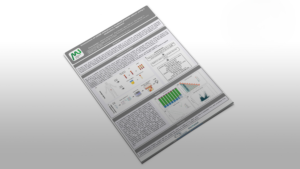- Chennan Li
- Anna Baj
- Clara C. Y. Seo
- Nicholas T. Terrigino
- John R. Bright
- S. Thomas Hennigan
- Isaiah M. King
- Scott Wilkinson
- Shana Y. Trostel
- William D. Figg
- William L. Dahut
- Jung-Min Lee
- David Y. Takeda
- Fatima Karzai
- Adam G. Sowalsky
Genitourinary Malignancies Branch; Women’s Malignancies Branch, National Cancer Institute, Bethesda, Maryland, USA
Genetic, epigenetic, and immunological activities that are embedded in liquid biopsy inform mechanisms to therapy responses and failures.

Baseline clinical characteristics of the cohort studied
| Characteristics | Unit | Median (range) |
|---|---|---|
| Age (on-study) | years | 64 (45-88) |
| Hemoglobin | g/dL | 12.4 (7.8-14.4) |
| Alkaline Phosphatase | U/L | 108 (40-747) |
| LDH | U/L | 204 (146-1997) |
| WBC | K/μl | 5.58 (3.39-15.3) |
| Lymphocytes | % | 25.2 (5.5-51.8) |
| Monocytes | % | 8.4 (4.9-14.3) |
| Neutrophils | % | 63.2 (36-88.4) |
| PSA | ng/dL | 65.6 (1.6-5000) |
| Gleason score | 9 (6-10) |
| Ethnicity | n |
|---|---|
| White | 30 |
| Black | 6 |
| Asian | 1 |
| Hispanic | 1 |
| Prior Treatment | 38 |
| ADT | 36 |
| Enzalutamide | 27 |
| Abiraterone | 26 |
| Chemotherapy | 27 |
| Radiotherapy | 19 |
| Prior immunotherapy | 14 |
WGS coverage and fragment length
| Category | Mean coverage | Range |
|---|---|---|
| Normal DNA | 153.2 | 185.5–126.6 |
| cfDNA | 139.2 | 164.8–118.7 |
| Category | Mean insert length (nt) | Range |
|---|---|---|
| Normal DNA | 180 | 191–166 |
| cfDNA | 165.6 | 172–158 |
- Circulating tumor DNA (ctDNA) purity can be used to predict therapy response of metastatic castration-resistant prostate cancer (mCRPC) to PD-L1/PARP1 inhibition.
- Aberrant DNA repair signatures inform PD-L1/PARP1 inhibitor therapy resistance.
- cfDNA methylation pattern correlates with gene expression and allows for identification of gene signatures specific to prostate cancer and distinct tumor phenotypes.
- Therapy response also associated with a greater diversity of TCRα/β CDR3 V(D)J recombination, implicating the capability of T cells in antigen recognition and differentiation.
- To define mechanisms of therapy resistance against the PDL1/PARP1 inhibition, we are evaluating interactions between genomic, epigenetic, and immunological alterations from each case.
- Select plasma specimen are also being analyzed for histone modification patterns, which will be integrated with the duet evoC cfDNA methylation data to obtain critical insights about drug resistance mechanisms
- We are investigating the use of cfDNA fragmentation patterns for gene expression/activity inference, which will potentially assist in validation of our results.
- Ultimately, we wish to validate the identified genetic mechanisms from similar clinical studies and through histopathological studies or in relevant human cell lines or animal models.
The authors wish to thank the patients and their families for
participating in this study. Also, the study cannot be done without
the assistance from the NIH High Performance Computing (HPC)
team. This project was funded by the Intramural Research
Program of the National Institutes of Health.








